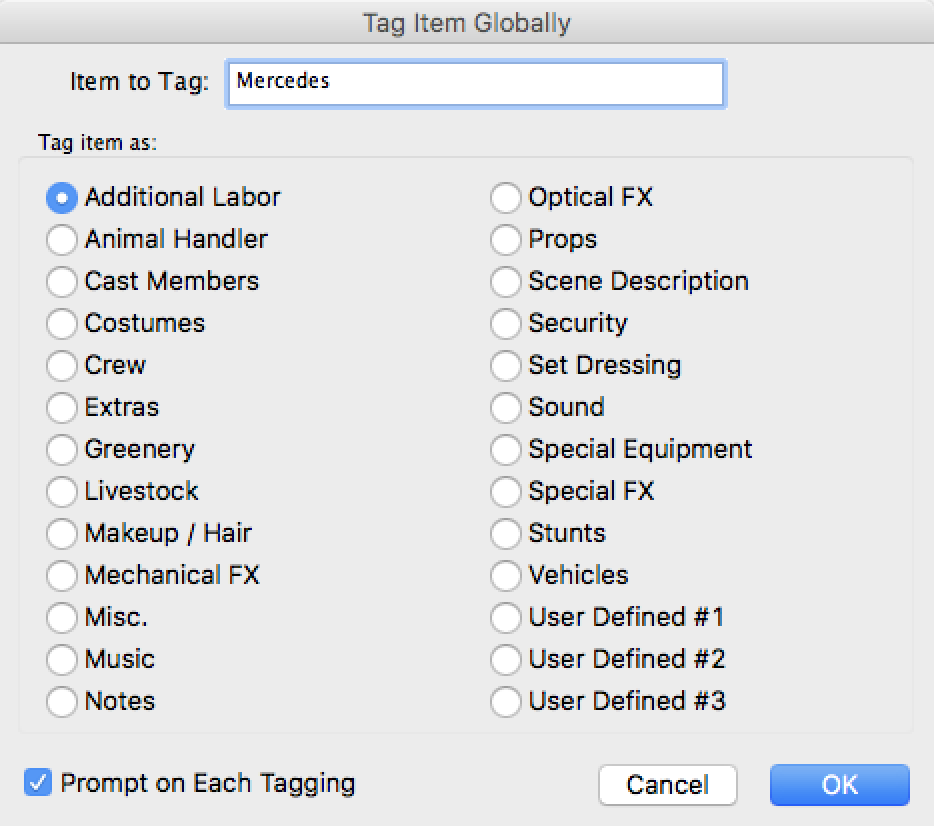


Tag script movie magic screenwriter pdf#
pdf and measure from the edge to the top of the first script line. The quickest way to find the right value is just to print a page from the. Movie Magic defaults to a top margin (to the page number) of only a tenth of an inch and it looks weird, so most users change it. It may be trickier if you're in Final Draft.

6 is generally a good match for Final Draft's one inch default. If you're in Movie Magic, remember you're setting the distance to the header, not the copy.
Tag script movie magic screenwriter how to#
The trick is figuring out how to change it. In Final Draft, it's under the "Document" menu. Both programs let you do this under "Page Layout." In Movie Magic, "Page Layout." is under the "File" menu. You'll need to adjust your top margin to match whatever the original script did. It will then place the first line a half inch or so under that. But Movie Magic means the distance from the edge of the paper to the top of the header. It will then put the header with the page numbering roughly in the middle of that space. In Final Draft, the top margin is the distance from the top edge of the paper to the top (not the baseline, the top) of the first line of actual script. By "top margin," Final Draft and Movie Magic mean entirely different things. This is probably the biggest single factor in throwing off pagination. pdf as closely as possible.Īdjust the top margin. So your final task is to adjust the breaks on the editable script so they match the. This may not make any difference, but it probably does. Nothing is more irritating than spending ten confused minutes on the phone before realizing that one person is working from a script that's 102 pages long while the other person's is 114 pages long. One is likely to be several pages longer than the other. The page breaks are probably very different between it and the version you just imported.

pdf file you requested from the sender, and you'll see why you wanted it. So you should still check it.Ĭheck the pagination. If the original script did something tricky with shots inside a scene, though, it's still possible to confuse the program. Fortunately, it's unlikely you'll find too many problems here as both applications are pretty good at recognizing existing formatting. In other words be sure the character names are still formatted as character names, that dialog still looks like dialog, etc. Go through the script quickly and make sure the element types have translated correctly. Click Script.ĭouble check the program's interpretation. Final Draft will give you a simpler dialog box that just asks if you want to import the file as Script or Text. In Movie Magic you'll get the same text import dialog box we mentioned in Step 1. rft as the file type in the File Open dialog in order to see it, but you should be used to this. (From here on, we'll assume you're receiving someone else's script and trying to convert it to your software.) You'lI need to select. rtf file a picture of what the original script looked like in the original application. Even though it won't be editable on the other end, this will give the person importing the. Both Final Draft and Movie Magic can save in. Or, if you're receiving a script from someone else, ask them to do this and send it along with the. If you're sending your script to someone else, save a. The best bridge between the two is a simple. Movie Magic has no idea what to do with a. Final Draft will even offer you what it claims is a Movie Magic format called. Most of these are legacy formats that have probably just been picked up from previous versions of the programs dating back to the early '90s and they're no use to you. Under "Save As." both applications will give you a lengthy list of possible formats. If copying and pasting isn't an option, you're going to have to export your script into another file format. If you've just opened up Final Draft to try this, it will be set up for Scene Heading, and so it will treat the entire pasted script as a long (very long) sequence of Scene Headings. If you paste text into Final Draft, the program simply applies the currently selected element formatting to the entire thing. Unfortunately, if you're going to Final Draft, this won't work. You'll have to double check it, of course, but you shouldn't find too many mistakes, if any. Movie Magic's aggressive interpretation is usually very good. The default values are to import the text as a script and to use its "most aggressive interpretation of the source text." Go ahead and hit OK. Movie Magic will give you its standard text import dialog box. You can simply select the entire script in Final Draft, copy it, and paste it directly into a blank Movie Magic script. IF you have BOTH applications, AND you're going from Final Draft to Movie Magic, you're in luck.


 0 kommentar(er)
0 kommentar(er)
